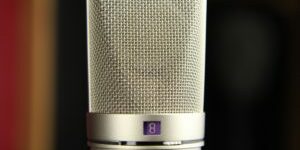Microphones are not only categorized according to their construction, as we have seen before. Depending on their polar pattern, microphones may have differences from each other. If you are going to set up a home studio, you should consider this feature to choose those microphones that best suit you and the quality you want in your recordings. Therefore, today we are gonna explain what a polar pattern is, and what type of microphones exists according to their polar pattern.
What is a polar pattern?
The explanation is very simple: the polar pattern defines the areas or directions where the microphone is most sensitive (directionality). Knowing the polar pattern of our microphone will allow us to adapt better to each situation and recording, since the directionality determines which sounds the microphone will pick up and which not. Thus, you can define the type of recording: closer, with more noise, further… Let us introduce you to the 6 types of microphones according to their polar pattern.
Omnidirectional
Omnidirectional are those microphones that capture sound with equal gain from either side or direction of the microphone. Imagine a microphone inside a globe: the whole globe will correspond to the places from which the sound will be captured. Therefore, if you want to record a voice, you can do it from anywhere around the mic, and it would be heard correctly. They are the easiest microphones to understand and also to build. If you want to record an orchestra that has a chorus behind it, the omnidirectional microphone would be quite suitable in this type of situation. However, the omnidirectional polar pattern, although it may seem the best option for any case, has its drawbacks, since it can pick up unwanted noise or instruments.
Cardioid
This polar pattern has a great flexibility. This is because its sensitivity range is in the front, minimizing (although not quite) the rear sensitivity. Its directionality is similar to the shape of a heart, capturing the signal sources that are placed in front of it. Therefore, this type of cardioid microphone is usually used for voice recordings (hand mic), guitars, drums, snares, toms … as it allows you to collect sound with quality without picking up other noises.
Supercardioid
Hypercardioid
Lobar (unidirectional)
Bidirectional or Figure eight
A bi-directional microphone has a polar pattern in the shape of a number eight, so it picks up the audio in the same way from the front as the back, avoiding side sounds. It is the type of microphone most used for guest television programs, radios and podcasts.
What do you think of these types of microphone according to their polar pattern? Have you already decided on the best for your Home Studio? Tell me in the comments!







